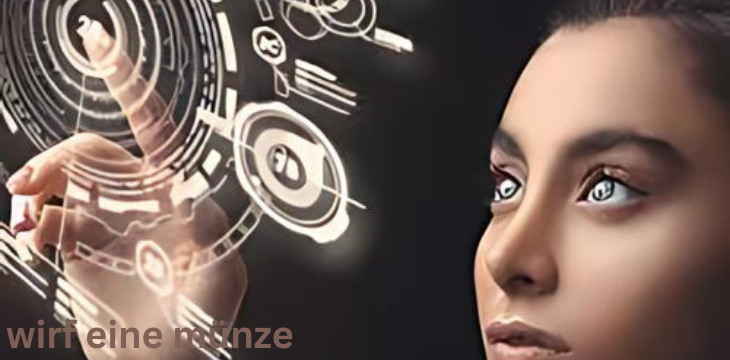Ever found yourself stuck at a crossroads, unable to decide between two equally enticing options? We’ve all been there! Whether you’re choosing between pizza toppings or deciding on a major life decision, the ancient practice of “wirf eine münze”—or “throw a coin” in English—can be an unexpected ally. This simple act of flipping a coin can do more than just add an element of chance; it can offer surprising insights into our decision-making processes and reveal a lot about our personal preferences and biases.
In this article, we’ll dive into the world of “wirf eine münze,” exploring its history, its psychological impact, and how you can use it effectively in your own life. So, ready to flip your way to better decisions? Let’s get started!
Contents
The History Behind Wirf Eine Münze
1. Ancient Origins
The practice of flipping a coin dates back thousands of years. In ancient Rome, it was known as “as” or “the coin,” and was used to settle disputes and make decisions. This method was so popular that it eventually became a staple in various cultures around the world.
2. Symbolism in Different Cultures
Coins have always held significant symbolic value. In ancient Greece, they were often used in oracles and divination practices. The heads and tails of a coin were seen as representing opposing forces, like good and evil or fate and free will.
3. The Evolution to Modern Times
Fast forward to today, and flipping a coin is still a common way to make quick decisions. From deciding who goes first in a game to more serious matters like choosing between job offers, “wirf eine münze” remains a timeless method.
How Wirf Eine Münze Affects Decision-Making
1. The Psychological Impact
Here’s where it gets interesting! Flipping a coin can help us understand our own biases and preferences. When you toss a coin, you might find yourself secretly hoping for a specific outcome. This tells you a lot about what you truly want, even if you’re not consciously aware of it.
2. Reducing Decision Fatigue
Ever been overwhelmed by too many choices? “Wirf eine münze” can simplify things. By leaving the decision to chance, you can bypass the mental exhaustion of weighing every option. It’s a quick fix for decision fatigue, especially when choices are equally appealing or unappealing.
3. Creating a Sense of Closure
Sometimes, just making a decision is enough to give you a sense of closure. Whether the outcome is what you hoped for or not, the act of flipping a coin can provide the final push needed to move forward.
How to Use Wirf Eine Münze Effectively
1. Set Clear Options
Before you toss the coin, clearly define your options. For example, if you’re choosing between two restaurants, make sure you’re only considering these two and that they both meet your basic criteria.
2. Make it Fun
Why not add a bit of excitement to the process? Use a unique coin or turn the act into a little ritual. This can make decision-making feel less mundane and more engaging.
3. Be Open to the Outcome
Remember, “wirf eine münze” is a tool, not a magic solution. Be open to whatever the coin lands on, and use it as a starting point for further reflection if needed.
Common Scenarios for Wirf Eine Münze
1. Everyday Decisions
- Choosing where to eat
- Deciding who goes first in a game
- Picking between two movies to watch
2. Life-Changing Choices
- Deciding between two job offers
- Choosing a place to live
- Making major financial decisions
3. Fun and Games
- Settling bets or arguments
- Picking teams in sports
- Deciding on the next vacation destination
FAQs
What does “wirf eine münze” mean?
“Wirf eine münze” is German for “throw a coin.” It’s a method of making decisions by flipping a coin to choose between two options.
How does flipping a coin help with decision-making?
Flipping a coin simplifies the decision-making process and can reveal your true preferences. It also helps reduce decision fatigue and provides a sense of closure.
Can “wirf eine münze” be used for important decisions?
Yes, while it’s not a foolproof method, it can be useful for making quick decisions and understanding your underlying preferences. However, for very important decisions, it’s best to consider other factors as well.
Is there a specific way to flip a coin?
There’s no one right way, but make sure to toss it high enough so it has a fair chance of landing on either side. The key is to make it random and unbiased.
Can “wirf eine münze” be used for more than just making choices?
Absolutely! It can also be used as a tool for fun, settling disputes, or even as a creative way to make mundane tasks more interesting.
Conclusion
So, there you have it—a comprehensive guide to “wirf eine münze” and its role in decision-making. Whether you’re trying to make a simple choice or seeking deeper insights into your preferences, flipping a coin can be an intriguing and useful tool. Remember, it’s not just about the outcome, but also about the process and what it reveals about you. So, next time you’re at a crossroads, don’t hesitate to give that coin a flip and see where it takes you!
